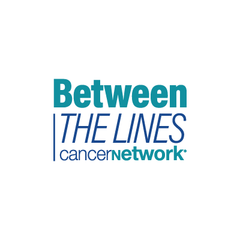
ELEVATE-RR Study Overview
Dr Bishop reviews the ELEVATE-RR trial enrollment strategy.
Episodes in this series

Michael R. Bishop, MD: Let’s move to the ELEVATE-RR study. Here’s the study overview. This was a randomized, open-label, phase 3, noninferiority study. It comes back to what Bruce was talking about. The Bruton tyrosine kinase [BTK] inhibitor has been game-changing in terms of care of chronic lymphocytic leukemia, particularly with the introduction of ibrutinib, where we were seeing great progression-free survival and differences in overall survival. But there had been concerns about some of the potential adverse effects associated with ibrutinib, particularly atrial fibrillation and other cardiovascular disease and the bleeding abnormalities.
There were subsequent trials looking at acalabrutinib. Both of these are irreversible binders of Bruton tyrosine kinase. It’s been hypothesized that because there can be binding of other kinases not in the tyrosine kinase family, that maybe this leads to some additional toxicities with one vs the other, with sometimes acalabrutinib showing less toxicity. In this situation, they wanted to compare the 2 head-to-head in a randomized trial with a primary end point of progression-free survival, but they also wanted to look at toxicities. It was a noninferiority trial.
The key eligibility criteria were that patients had to be adults over the age of 18 who had 1 or more prior therapies. The other eligibility criteria included that they had to have a confirmed 17p or 11q deletion, which was thought to be a concentrated poor prognostic group. It can be argued whether 11q deletion is a poor prognostic [marker]. It depends on which paper you read. But I don’t think any of us are going to argue that 17p deletion isn’t bad.
They had to have a decent performance status, an ECOG performance status of 2 or less. Patients who had bad cardiovascular disease and were receiving a concomitant warfarin or equivalent vitamin K antagonist weren’t eligible for this trial. If they had had a prior BTK or BCL2 inhibitor, they were excluded. If they required treatment with a protein pump inhibitor, they were excluded. As we know, a protein pump inhibitor will inhibit absorption of BTK inhibitors. Then they were stratified if they met these criteria. They got stratified by their mutation status—whether they had one or not—then they got stratified by their performance status—if it was 1 or less or 2—and then by the number of prior therapies—1 to 3 or 4 or greater.
They were randomized on a 1:1 basis to receive either acalabrutinib at the standard dose of 100 mg [twice a day] or ibrutinib 420 mg daily. Of the 533 patients, 268 patients were randomized to the acalabrutinib arm and 265 were randomized to the ibrutinib arm. There wasn’t a ramp-up in this situation. For the primary end point, an independent review committee [IRC] assessed progression-free survival. The clinical investigators knew what drugs their patient was receiving because they knew what the drugs looked like, and one was once a day while the other was twice a day, but the IRC was blinded to this. The key secondary end points were atrial fibrillation of any grade; infection incidence, including grade 3 or higher; and the incidence of Richter transformation. Remember, these are patients who had received prior therapy. Then they looked at overall survival.
Over 800 patients were assessed for eligibility. Of the 275 patients who didn’t meet eligibility, half of the patients either didn’t have a 17p or 11q deletion, and the other half didn’t meet the other criteria that we were [mentioning] before.
Transcript edited for clarity.
Newsletter
Stay up to date on recent advances in the multidisciplinary approach to cancer.



















































































